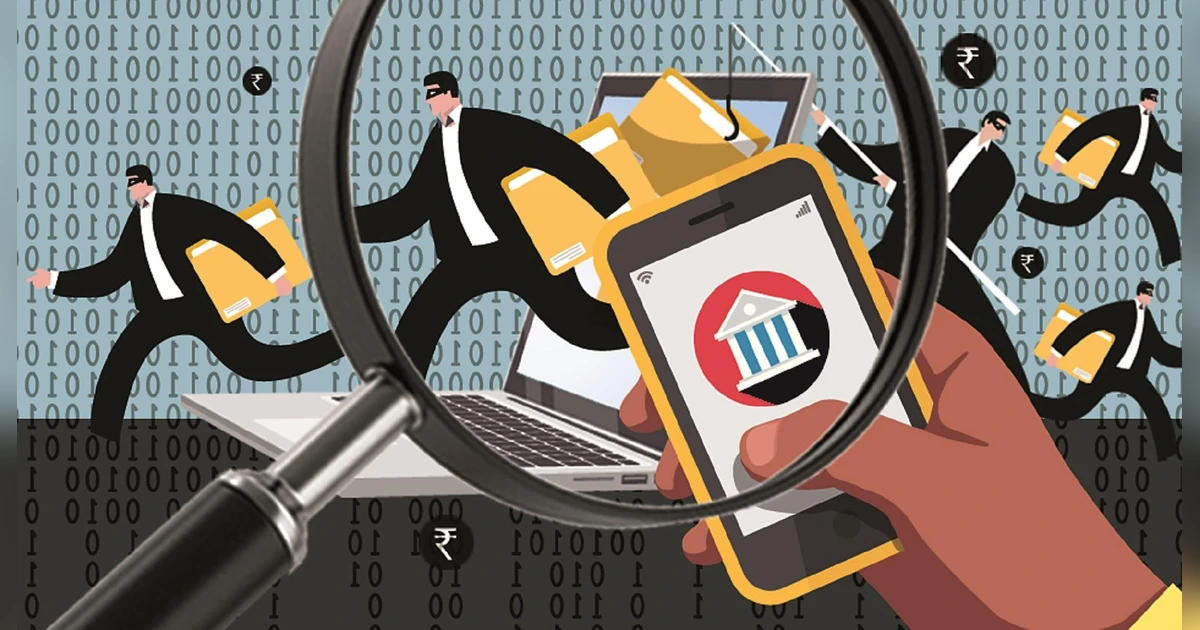Context
India’s digital economy, driven by UPI, e-commerce, and affordable internet, has boosted inclusion and convenience but also created new vulnerabilities. Cyber frauds now rely more on social engineering (psychological manipulation) than on technical hacking.
What is cyber fraud?
A cyber fraud is a crime where digital platforms are misused to deceive individuals or institutions for financial gain, often through psychological manipulation or data theft.
Who are the main victims of such frauds?
- Elderly and rural citizens: less digitally literate but often with high savings.
- Job seekers and loan applicants: exploited through false opportunities.
- Even educated professionals fall prey due to fear, pressure, or urgency created by fraudsters.
How has the nature of cyber frauds changed over time?
- Earlier, crimes were mostly physical or technical – like ATM withdrawals or password theft.
- Now they are more psychological, involving phishing, OTP/UPI scams, fake loan/job offers, and digital arrests (impersonation of police/customs).
How do cyberfrauds operate?
Cyber frauds typically operate by exploiting human trust and system loopholes. Examples:
- Social Engineering: manipulating fear, urgency, or greed to trap victims.
- Phishing: fake emails/SMS to steal sensitive information.
- Remote Access Scams: malicious apps giving fraudsters device control.
- Digital Arrests: impersonation of officials with fake warrants to extort money.
- Identity Theft: misuse of Aadhaar, PAN, or bank details for further frauds.
Why is cyber fraud increasing in India?
- Data Leaks: Customer information circulates freely, making targeting easier.
- Weak KYC Norms: Fake or incomplete KYCs allow mule accounts (bank accounts used by fraudsters to receive and transfer illegally obtained money) to flourish.
- Slow Institutional Response: Banks and cyber police act reactively, not proactively.
- Inadequate Monitoring Tools: Large abnormal transactions often go unchecked, while small credit card spends get verified.
- Poor Coordination: Banks, telecoms, and cyber police rarely share intelligence in real-time.
What are the common patterns observed in large-scale cyber frauds in India?
- Unusual Scale: Transactions are often many times larger than the customer’s normal activity, signaling fraud.
- High Frequency: Multiple debits occur in a short span, rather than single or occasional transactions.
- Mule Accounts: Money is routed to mule accounts, then dispersed to the smaller or cooperative banks to hide the trail, known as layering.
- Delayed Freezing: Banks often take time to block accounts, allowing funds to move out of reach.
Challenges and Way Forward
| Challenges | Way Forward / Solutions |
| Banks’ limited role – generic advisories, poor fraud detection, failure to flag abnormal transactions | Implement AI-driven monitoring with personalised transaction profiles and anomaly detection; identify and block mule accounts with weak KYC |
| Cyber police constraints – lack manpower, technology, training; delays lead to permanent loss | Establish 24/7 dedicated cyber response units, equip them with AI tools, and enhance international cooperation for cross-border fraud |
| Regulatory weaknesses – RBI guidelines exist but enforcement and accountability are weak | Enforce strict compliance, mandate action within the 24-hour golden window, and ensure swift victim compensation |
| Public unawareness – victims avoid reporting due to stigma or lack of faith in recovery | Launch awareness campaigns, educate citizens about cyber threats, and simplify reporting mechanisms |
| Technology gaps – outdated or insufficient tools for fraud detection | Adopt Blockchain for tamper-proof data, Machine Learning to predict high-risk accounts, and shared fraud intelligence networks |
Conclusion
India’s digital economy will only be sustainable if trust and safety are ensured. The fight against cyber fraud requires shifting from reactive fire-fighting to proactive prevention using AI, Blockchain, strong KYCs, and rapid-response policing. Safeguarding citizens is not just a financial need but a governance imperative to secure the credibility of Digital India.
| Ensure IAS Mains Question Q. Cyber frauds in India increasingly rely on social engineering rather than hacking. Discuss the systemic gaps that allow such frauds and suggest measures to strengthen digital trust. (250 words) |
| Ensure IAS Prelims Question Q. Consider the following statements about cyber fraud in India: 1. Digital arrest scams involve impersonation of government officials. 2. Mule accounts with fake or weak KYC details are often used to launder fraud money. 3. AI can be used for anomaly detection in financial transactions. 4. Blockchain technology can help secure citizen data against tampering. Which of the statements given above is/are correct? a) 1 and 2 only b) 2, 3 and 4 only c) 1, 3 and 4 only d) 1, 2, 3 and 4 Answer: d) 1, 2, 3 and 4 Explanation: Statement 1 is correct: Digital arrest scams involve criminals impersonating police, customs, or other government officials to instill fear and coerce victims into paying money. Statement 2 is correct: Mule accounts are bank accounts opened with fake or incomplete KYC (Know Your Customer) details, used to receive and move fraudulently obtained funds, making recovery difficult. Statement 3 is correct: Artificial Intelligence (AI) can monitor transactions in real-time, detect unusual patterns in size, frequency, or timing, and alert banks or authorities about possible frauds. Statement 4 is correct: Blockchain technology enables tamper-proof and secure storage of citizen or customer data, reducing the risk of unauthorized access or manipulation. |
Also Read | |
| UPSC Foundation Course | UPSC Daily Current Affairs |
| UPSC Monthly Magazine | CSAT Foundation Course |
| Free MCQs for UPSC Prelims | UPSC Test Series |
| ENSURE IAS NOTES | Our Booklist |





